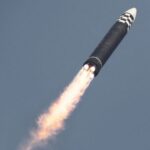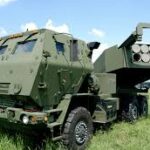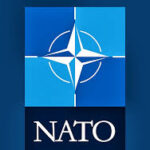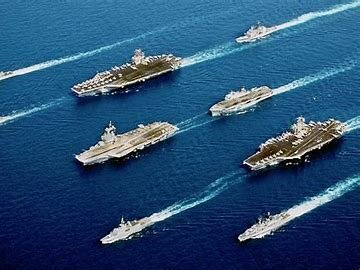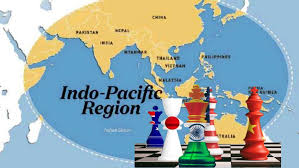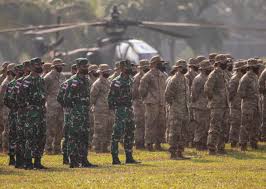As tensions in the West Philippine Sea rise and the prospect of a war over Taiwan grows, the US Pentagon is increasing its regional defense diplomacy in a powerful rebuke to China’s rising regional threats and ambitions. Last week, US Secretary of Defense Lloyd Austin welcomed counterparts from Japan, Australia, and the Philippines to what is being billed to as a new “Squad” defense collaboration in the Indo-Pacific area. The participants “share a vision for peace, stability and deterrence in the Indo-Pacific” and have “chartered an ambitious course to advance that vision together.” Austin spoke at a press conference on the margins of the defense summit in Hawaii, headquarters to the US Indo-Pacific Command (INDOPACOM).
Only a few weeks had passed since the four countries’ first-ever combined patrols in the contentious West Philippine Sea and the historic trilateral meeting between US President Joe Biden, Philippine President Ferdinand Marcos Jr., and Japanese Prime Minister Fumio Kishida at the White House. With an eye toward China’s growing footprint across the Western Pacific, the four Squad nations plan to strengthen intelligence and maritime security cooperation, increase interoperability, and increase joint patrols and drills in the upcoming months.
The new quadrilateral grouping is institutionalizing quickly thanks to Marcos Jr.’s hard turn toward the West and his progressively firmer stance on Philippine claims against China in the West Phillipine Sea. The Marcos pivot had caught China completely off guard.
Unlike the more well-known “Quad,” which is a security alliance made up of the US, Japan, Australia, and India, the “Squad” is more internally coherent and has a clearly defined shared strategic vision for the region. India has openly defied Western-led sanctions against Moscow over its invasion of Ukraine and maintains close ties with its longstanding security partner, Russia. In contrast to India, the Philippines is an ally of the US under the mutual defense treaty and is about to finalize an agreement with Japan akin to the Visiting Forces Agreement, which it already has with Australia and the US.
The new “Squad” will likely further embolden the Philippines in its ongoing maritime tussles with China, which have recently intensified through Chinese “gray zone” tactic attacks on Philippine ships. That, in turn, has raised concerns of a possible armed conflict that draws in the US and perhaps by extension Japan and Australia.
China’s Communist Party-run Global Times mouthpiece has openly warned that the new “Squad” security grouping is “exacerbating regional risks”, underscoring Beijing’s growing irritation with Manila’s role as a new linchpin in America’s “integrated deterrence” strategy of counterbalancing China’s regional rise and ambitions.
India has been buying more sophisticated Russian weaponry while importing a lot more cheap Russian oil, much to the dismay of the West. India, meanwhile, has strongly resisted what it perceives to be neo-colonialism and Western “hypocrisy.” At a conference on Global South nations, India’s External Affairs Minister S Jaishankar expressed dissatisfaction, saying, “Those who are economically dominant today are leveraging their production capabilities and those who have institutional influence or historical influence have actually weaponized a lot of those capabilities.” The bases to which the US has rotational military access include those near Taiwan.
By pursuing legal action and stepping up its naval and coast guard deployments, Manila has also aggressively retaliated against China in the West Philippine Sea. Furthermore, it is a US ally through a mutual defense treaty that has progressively stronger defense ties with both Australia and Japan. The major shift in Philippine foreign policy toward Taiwan under Marcos Jr. made the formation of the “four-way Squad” possible.
Manila purposefully avoided joining any anti-Chinese coalition or grouping during the previous Rodrigo Duterte administration in favor of solid relations with all major powers. At first, Marcos Jr. also gave indications of a similar hedging tactic by emphasizing his adherence to the neutrality stance of the Duterte administration, which is “friends to all, enemy to none.” The president of the Philippines changed course after a largely ineffective state visit to Beijing last year, which failed to result in any progress on unresolved bilateral issues, such as those involving the West Philippine Sea. Instead, he quickly increased security cooperation with longstanding allies led by the US.
“The US is clearly trying to rally its allies – Japan and Australia – to support the Philippines, encourage the Philippines to engage in more military provocations in the West Philippine Sea, exacerbate the complexity of the regional situation, and then find excuses to strengthen the military presence of the US, Japan and Australia in the West Philippine Sea,” Wei Dongxu, a Beijing-based military expert, told the Global Times in response to the recent “Squad” meeting.
The Chinese expert warned that “involvement of external countries and forces in [the] West Philippine Sea issues will only further complicate the situation in the region and flaunting their military power will not only affect normal regional cooperation but may also lead to conflicts.”
China clearly sees the new quadrilateral grouping as part of America’s containment strategy, while the Philippines views the “Squad” as a legitimate attempt to defend its sovereign rights and uphold a rules-based order in the maritime region. As a result, there will probably be constant escalation and brinkmanship in the West Philippine Sea for some time to come.


